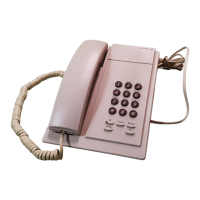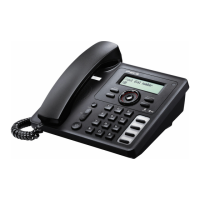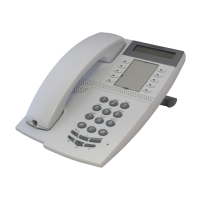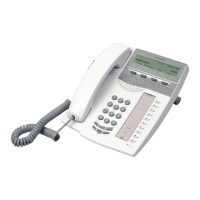JESSICA PBX GATEWAY QUESTIONNAIRE LBI-39039B
A-
5
DIGITAL TRUNKS
The MD110 supports several different digital trunks, or digital multiplexed interface standards. T1, E1, and ISDN PRI
(Primary Rate Interface) service can be used to provide digital CO, DID, or TIE trunks. The type of digital trunk service used
depends on the interface standards followed by the country of installation.
T1 Span
T1 refers to the 24-channel digital multiplexed interface standard for digital transmission commonly used in North
America, and some other countries in the world (parts of the Far East, South America, etc.). A T1 Span is used to
provide up to 24 digital trunked channels or lines between the MD110 and PSTN (CO and/or DID trunks), or between
the MD110 and another PBX (TIE trunks). Note that all 24 available channels do not have to be used.
For each T1 Span:
- List the circuit IDs and channel numbers, and indicate how the channels are to be used: CO (Incoming only,
Outgoing only, Bothway), DID, or TIE. Note: A single T1 Span between the MD110 and PSTN can be configured
to provide both common CO and DID trunk service (i.e., several channels used for CO trunks, and several channels
used for DID trunks).
- Indicate which of the following apply:
__ Forward Line Clearing
__ Backward Line Clearing
__ B-Answer Supervision
__ Dial Pulse or DTMF
__ Common Control CO or Step-by-Step (a few older COs still use Step-by-Step switching equipment)
__ If CO trunk, then: Ground Start or Loop Start
__ PTS (Proceed to Send) type: Wink Start or Tone or Wink+Tone
- Indicate the T1 signaling and line coding which apply:
__ Signaling: CAS (Channel Associated Signaling) or CCS (Common Channel Signaling)
__ Line Coding: ZCS (Zero Code Suppression) or B8ZS (Bipolar 8 Zero Substitution)
- Indicate the T1 framing format which applies (dependent on CSU):
__ Framing Format: D4 or ESF (Extended Super Frame)
- For CO trunks, indicate where each incoming trunk group should terminate (DISA, console, extension, hunt group).
Note: A standard Jessica configuration would use DISA termination.
- For DID service, provide the following information:
What is the assigned DID number range? ____________ through ____________
How many digits are being sent by the Central Office? ____________
Should vacant numbers be intercepted? ____________
Where? ____________
- For TIE trunks, list the existing access codes and circuit IDs, and indicate where the TIE lines terminate (location of
outbound terminating end). Provide name and phone number of contact at that location.

